 "ttyymmnn" (ttyymmnn)
"ttyymmnn" (ttyymmnn)
08/18/2020 at 12:35 • Filed to: wingspan, Planelopnik, TDIAH
 8
8
 16
16
 "ttyymmnn" (ttyymmnn)
"ttyymmnn" (ttyymmnn)
08/18/2020 at 12:35 • Filed to: wingspan, Planelopnik, TDIAH |  8 8
|  16 16 |
!!! UNKNOWN CONTENT TYPE !!!
Welcome to
This Date in Aviation History
, getting of you caught up on milestones, important historical events and people in aviation from August 15 through August 18.
!!! UNKNOWN CONTENT TYPE !!!
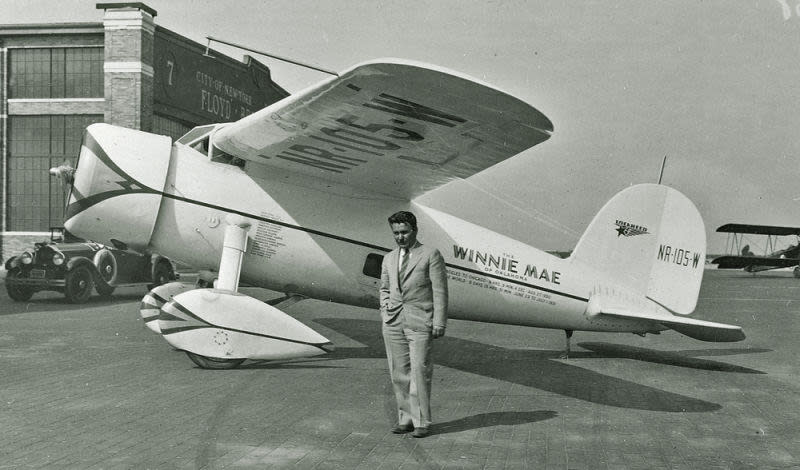 !!!CAPTION ERROR: MAY BE MULTI-LINE OR CONTAIN LINK!!!
!!!CAPTION ERROR: MAY BE MULTI-LINE OR CONTAIN LINK!!!
August 15, 1934 – The death of Wiley Post. The 20-year period between the World Wars, roughly 1919 to 1939, is widely considered the !!!error: Indecipherable SUB-paragraph formatting!!! . Technological advances in aircraft construction saw the fabric-covered biplanes give way to all-metal monoplanes, and flamboyant barnstormers crisscrossed the United States, kindling a fascination with flying in the public. As more and more civilian pilots took to the skies, aviation ceased to be an entirely military affair, and larger-than-life characters began pushing the boundaries of flight as they strove to set records in altitude, speed, and distance, while also helping to advance aviation technology. One of the greatest characters to come out of the the Golden Age was Wiley Post.
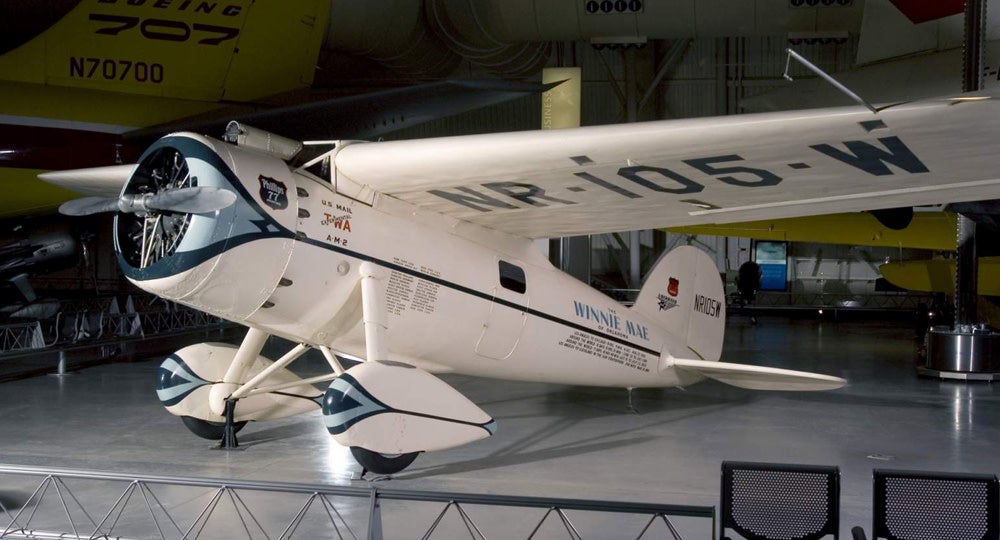 !!!CAPTION ERROR: MAY BE MULTI-LINE OR CONTAIN LINK!!!
!!!CAPTION ERROR: MAY BE MULTI-LINE OR CONTAIN LINK!!!
Post was born in Van Zandt County, Texas and became fascinated with aviation at the age of 14 when he saw his first airplane at a county fair. With the outbreak of WWI, Post enlisted in the US Army Air Service, but the war ended before he could finish his training, and he returned to work in the oilfields of Oklahoma. At the age of 26, Post finally made it into the air, not as a pilot, but as a daredevil parachutist for a traveling flying circus. When Post lost his left eye in an oilfield accident, he used the money from the settlement to purchase his first airplane, and he became the personal pilot of a wealthy Oklahoma oilman who purchased a !!!error: Indecipherable SUB-paragraph formatting!!! and named it Winnie Mae after his daughter. This began a lifelong association of the Vega and Post, and he put his first mark in the record books with a victory in the National Air Race Derby from Los Angeles to Chicago, completing the flight in just over nine hours. But still greater fame lay ahead.
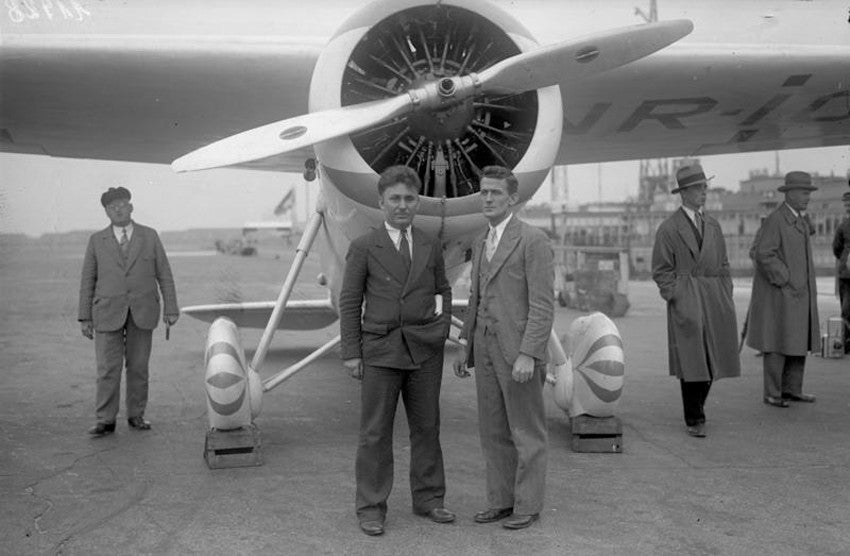
Wiley Post and Harold Gatty photographed at Berlin-Tempelhof Airport before continuing on to Moscow on their round-the-world flight
On June 23, 1931, still piloting Winnie Mae , Post and navigator !!!error: Indecipherable SUB-paragraph formatting!!! set out from Roosevelt Field in New York for a flight around the world. Their route took them to the Canadian Maritimes, then over the British Isles and Europe, across Russia, then on to Alaska and across Canada before landing back in New York. The flight covered 15,474 miles, and the pair completed the journey in just 8 days, 15 hours, and 51 minutes, slashing more than 12 days off the previous record set by the !!!error: Indecipherable SUB-paragraph formatting!!! (LZ 127) in 1929. Post and Gatty were feted with a ticker-tape parade and lunch at the White House with President !!!error: Indecipherable SUB-paragraph formatting!!! . But records in the Golden Age rarely stood for long. After three years spent upgrading the Winnie Mae with an autopilot and radio direction finder, Post took off from Floyd Bennett Field in New York on July 15, 1933 and flew roughly the same route as before, but this time he flew alone. When Post landed back at Bennet, he had taken a day off of the he set with Gatty and finished the flight just 7 days, 18 hours, 49 minutes. In an era where feats of aviation still garnered the attention of the world, a crowd of 50,000 thronged the airfield on his return.
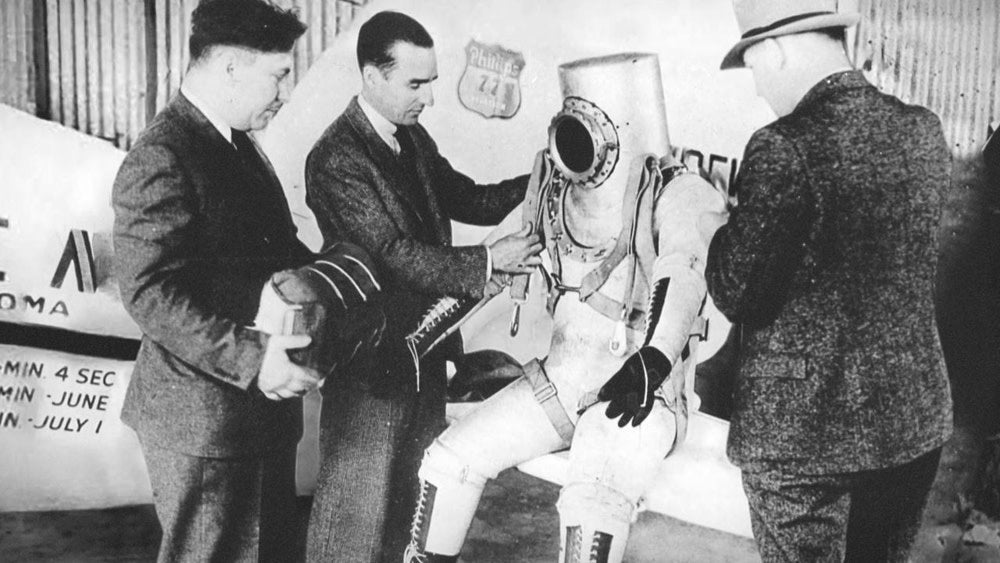
Post dons his homemade pressure suit prior to one of his high-altitude flights
But Post was not just a record breaker. Building on the success of his round-the-world flights, he began to investigate long-distance flight at what was considered an extreme altitude for the day. With backing from the Philips Petroleum Company and the B.F. Goodrich Company, Post developed a pressure suit that allowed him to fly in the frigid and thin air at 50,000 feet. In the process, Post also discovered the !!!error: Indecipherable SUB-paragraph formatting!!! , a high-altitude, high-speed current of air that today helps speed jet airliners on routes across the country.
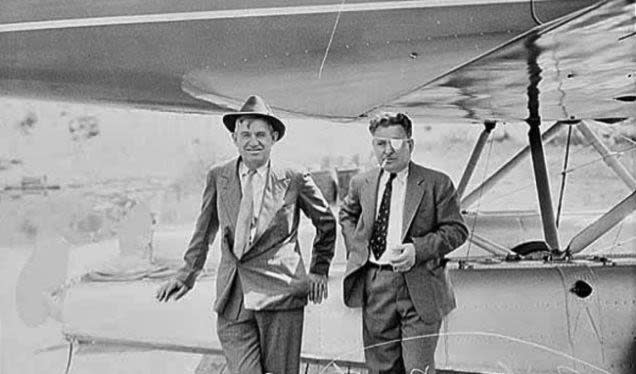
Will Rogers and Wiley Post photographed a short time before their fatal crash
For such a giant of the Golden Age of flight, it would seem fitting somehow for Post to die in a blaze of glory, trying to break yet another record. However, his death on August 15, 1935 was anything but glorious. Since the early days of Post’s flying career, he had been close friends with American author and humorist
!!!error: Indecipherable SUB-paragraph formatting!!!
, and they often traveled together, with Post flying while Rogers worked at his typewriter. During a flight from Fairbanks to Point Barrow, Alaska in an experimental aircraft cobbled together from parts scavenged from a
!!!error: Indecipherable SUB-paragraph formatting!!!
and
!!!error: Indecipherable SUB-paragraph formatting!!!
, Post became lost and and landed to ask for directions. Taking off again, the aircraft suffered engine failure and crashed into Walapka Lagoon, killing both men. Post was just 36 years old. During his lifetime, Post was awarded the
!!!error: Indecipherable SUB-paragraph formatting!!!
in 1932, the
!!!error: Indecipherable SUB-paragraph formatting!!!
in 1934, and was posthumously inducted into the
!!!error: Indecipherable SUB-paragraph formatting!!!
in 1969. The
Winnie Mae
is enshrined at the Smithsonian Air & Space Museum in Washington, DC.
!!! UNKNOWN CONTENT TYPE !!!
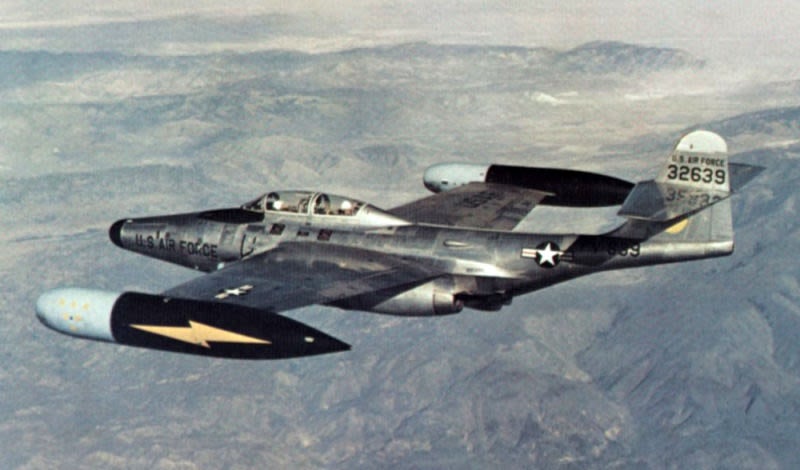
August 16, 1948 – The first flight of the Northrop F-89 Scorpion. When fighter aircraft first flew in WWI, and throughout much of WWII, they were limited to daylight operations in good weather. Rain or fog made most missions impossible or, at the least, very dangerous. It wasn’t until the introduction of airborne radar sets, and planes large and powerful enough to carry them, that warplanes could fight effectively at night. But following WWII, the continued use of high-flying strategic bombers, and later ones that could carry nuclear weapons, called for a new type of interceptor, one that could fly day or night, and in all weather conditions.
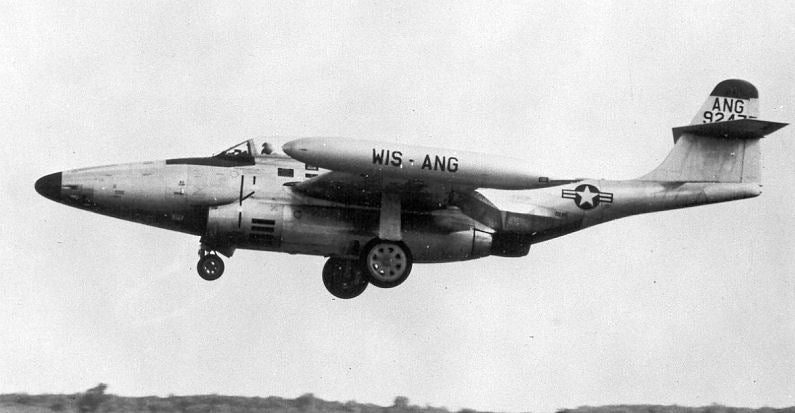
An early F-89A Scorpion of the 126th Fighter-Interceptor Squadron
The Northrop F-89 Scorpion was the US Air Force’s first interceptor designed specifically for all-weather operations, and it traces its origins back to 1945, when the US Army Air Forces (soon to become the US Air Force in 1947) began looking for a replacement for the !!!error: Indecipherable SUB-paragraph formatting!!! night fighter. The specification for the new interceptor called for a twin-engine aircraft that was heavily armed with six guns—four in the front and two in the rear—that would be set in flexible mounts and capable of being aimed by radar. Additionally, the interceptor would be armed with air-to-air rockets stored internally along with 1,000 pounds of bombs and external rockets for ground attack. While the USAAF did not specify that a jet engine be used, the top speed requirement could only realistically be achieved with jet power.
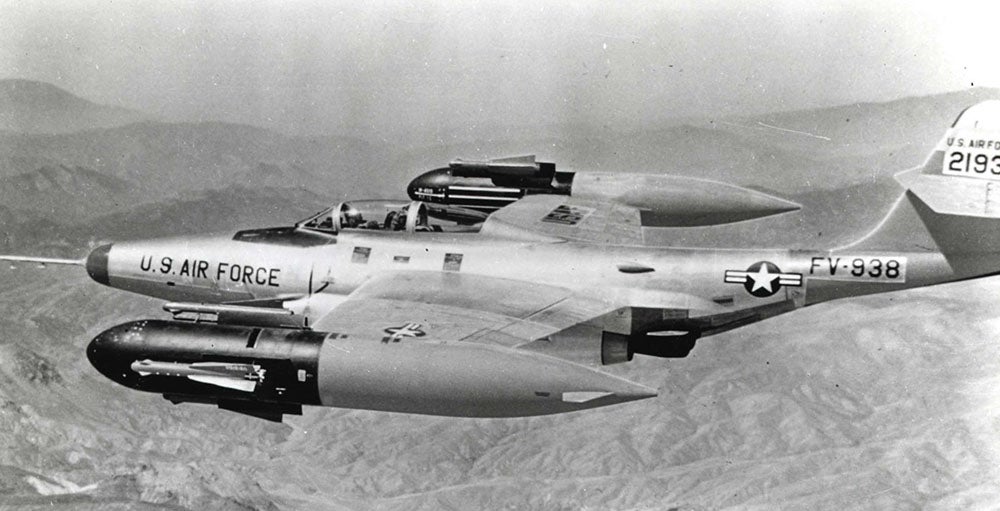
An F-89H Scorpion armed with Falcon air-to-air missiles mounted on the wingtip fuel tanks
The USAAF received proposals from Bell, Consolidated-Vultee, Douglas, Goodyear, Curtiss-Wright, and four submissions from Northrop. They chose two finalists, the !!!error: Indecipherable SUB-paragraph formatting!!! , and one of the Northrop designs, known as the N-24. The selection of the N-24 over the Blackhawk spelled the end of Curtiss-Wright as an airplane manufacturer, but Northrop’s N-24 bore little resemblance to the final F-89. The N-24 was originally designed with a swept wing but, at the request of the Air Force, Northrop adopted a thin straight wing to allow the aircraft to carry greater weapons loads while making it more stable at lower speeds. The pilot and radar operator, who were originally housed in separate cockpits, were moved together into a tandem position under a single canopy, and permanent wingtip fuel tanks were added. By this time, the Air Force also dropped the requirement for a rear gun. Production of the F-89A was approved in 1949, but development continued at a rapid pace and only 18 of the original A models were produced before the introduction of the F-89B with improved avionics.
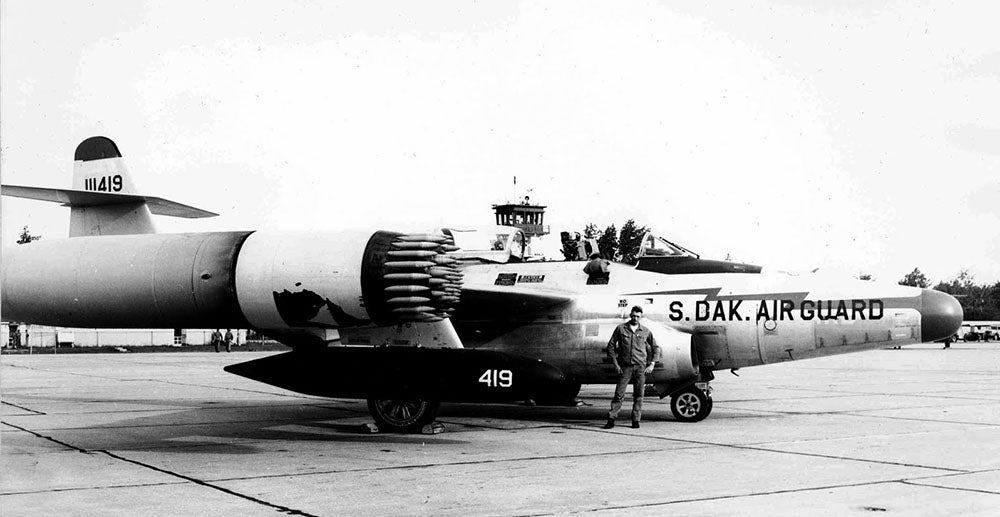
Loaded for Bear(s): An F-89D of the South Dakota Air National Guard displays a fully-loaded wingtip rocket pod. Also worth noting is the sheer size of the Scorpion compared to the pilot.
Later upgrades included the introduction of the F-89D, which added wingtip pods that carried fuel as well as 52 !!!error: Indecipherable SUB-paragraph formatting!!! (FFAR, also known as Mighty Mouse) per wing. These missiles were intended to be fired into a formation of bombers, but in practice they were used mostly for ground attack. The F-89D also had its nose guns removed in favor of a Hughes fire control system, which signaled a shift in Air Force doctrine from guns to a greater reliance on air-to-air missiles and rockets. The F-89D was the major production model of the Scorpion, and 682 out of a total of 1,050 of all variants were built to these specifications. The final derivative, the F-89J, was the first aircraft capable of carrying a pair of !!!error: Indecipherable SUB-paragraph formatting!!! nuclear rockets which, like the FFARs, would have been used to destroy bombers by detonating the nuclear warhead in the middle of a formation. The Scorpion entered service in 1951, and it served with the Air Defense Command until 1959. After its removal from frontline service, the Scorpion served the Air National Guard until its retirement in 1969.
!!! UNKNOWN CONTENT TYPE !!!
!!! UNKNOWN CONTENT TYPE !!!
Short Takeoff
!!! UNKNOWN CONTENT TYPE !!!
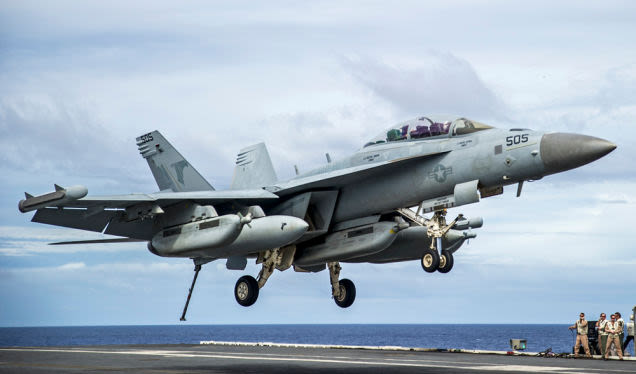
August 15, 2006 – The first flight of the Boeing EA-18G Growler,
a carrier-based electronic warfare aircraft developed from the
!!!error: Indecipherable SUB-paragraph formatting!!!
as a replacement for the
!!!error: Indecipherable SUB-paragraph formatting!!!
. Development of the Growler began with an F/A-18F two-seat Super Hornet fitted with the
!!!error: Indecipherable SUB-paragraph formatting!!!
electronic warfare system. Following the success of that aircraft, the US Navy ordered the EA-18G into production in October 2004. The Growler is capable of flying in concert with F/A-18 attack aircraft in all phases of combat missions while providing both electronic suppression of enemy radar and the ability to destroy enemy radar sites with radar-guided missiles. The Growler entered service in 2008, and currently serves with the US Navy and Royal Australian Air Force.
!!! UNKNOWN CONTENT TYPE !!!
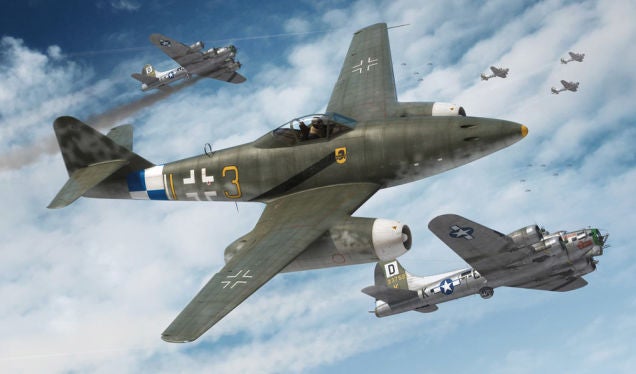
August 15, 1944 – The first aerial victory is scored by a jet-powered fighter. Development of the turbojet engine began separately in Germany and Great Britain before WWII, but it was the German Luftwaffe that fielded the first operational jet fighter with the !!!error: Indecipherable SUB-paragraph formatting!!! ( Swallow ). The first missions of the 262 took place in April 1944, and they were flown primarily against large formations of American bombers carrying out daylight bombing raids. As a member of !!!error: Indecipherable SUB-paragraph formatting!!! , the world’s first operational all-jet squadron, Feldwebel Helmut Lennartz shot down a !!!error: Indecipherable SUB-paragraph formatting!!! , one of a total of eight victories he scored flying the Me 262. By war’s end, Schwalbe pilots had claimed a total of 542 victories against Allied aircraft.
!!! UNKNOWN CONTENT TYPE !!!
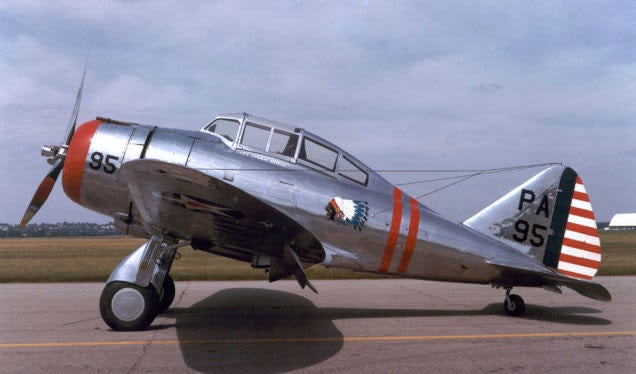
August 15, 1935 – The first flight of the Seversky P-35, an all-metal monoplane fighter designed for the US Army Air Corps by !!!error: Indecipherable SUB-paragraph formatting!!! , who went on to design the !!!error: Indecipherable SUB-paragraph formatting!!! after Seversky became !!!error: Indecipherable SUB-paragraph formatting!!! . The P-35 was initially armed with one .30 caliber and one .50 caliber machine gun, and could carry thirty 10-pound bombs carried on under-wing hardpoints. Following the outbreak of WWII, the P-35 was upgraded to the P-35A with a more powerful !!!error: Indecipherable SUB-paragraph formatting!!! engine and standardized armament, but its semi-retractable landing gear hampered its performance against more modern designs, particularly the latest Japanese fighters, and it was quickly retired. Just under 200 were built.
!!! UNKNOWN CONTENT TYPE !!!
!!! UNKNOWN CONTENT TYPE !!!
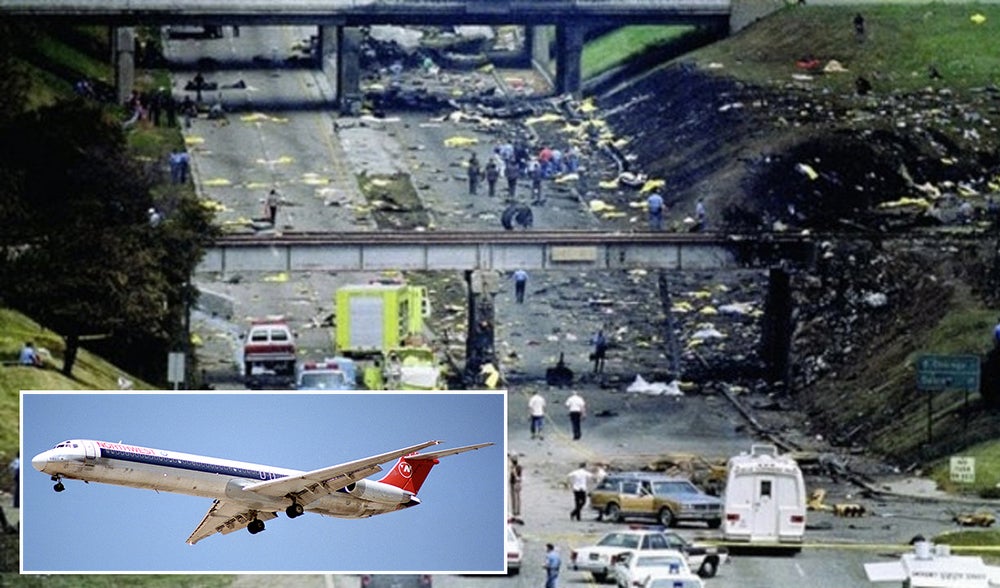
August 16, 1987 – The crash of Northwest Airlines Flight 255. Northwest 255 was !!!error: Indecipherable SUB-paragraph formatting!!! (N312RC) service that originated in Minneapolis, Minnesota with scheduled stops at Detroit Metropolitan Airport and Phoenix Sky Harbor before terminating at John Wayne Airport in California. On departure from Detroit, the airliner failed to gain altitude on takeoff and crashed onto a roadway roughly 3,000 feet from the end of the runway. Of the 155 passengers and crew, only one passenger survived, four-year-old Cecelia Cichan. Though a plan had been filed for the flight to depart from one of the airport’s longer runways, it was instead directed to the shortest runway, and analysis of the cockpit voice recorder discovered that the flight crew had failed to go through the taxi checklist and had neglected to extend the flaps and slats for takeoff. The alarm that would have alerted them to an incorrect takeoff configuration failed to sound due to an undetermined electrical fault. At the time, it was the second deadliest aircraft accident in the US, and the worst involving an MD-82 until !!!error: Indecipherable SUB-paragraph formatting!!! in 2005.
!!! UNKNOWN CONTENT TYPE !!!
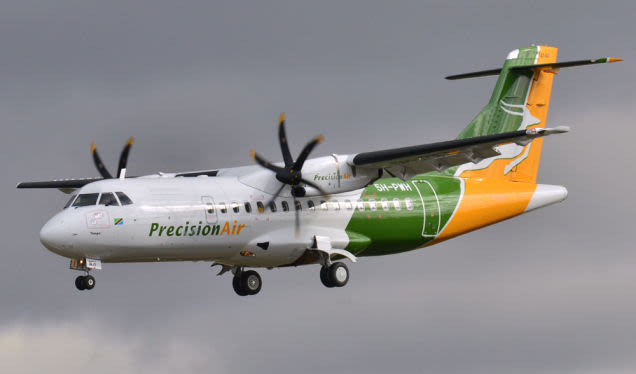
August 16, 1984 – The first flight of the ATR 42, a twin-turboprop regional airliner developed through a partnership between between France and Italy known as Avions de transport regional and Aerei da Transport Regionale ( !!!error: Indecipherable SUB-paragraph formatting!!! ), both of which translate as Regional Air Transport. Depending on the variant, the ATR 42 is powered by two !!!error: Indecipherable SUB-paragraph formatting!!! , PW121 or PW127 engines and can accommodate 40-52 passengers. It also served as the basis for the enlarged !!!error: Indecipherable SUB-paragraph formatting!!! , which first flew in 1988. The turboprop airliner entered service with Air Littoral of France in 1985As of 2014. Nearly 500 have been built to date, and the airliner remains in production.
!!! UNKNOWN CONTENT TYPE !!!
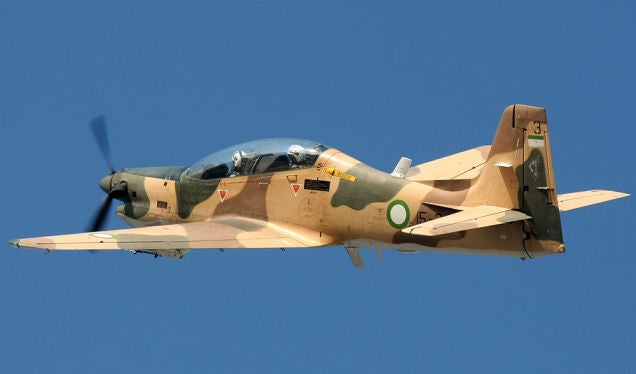
August 16, 1980 – The first flight of the Embraer EMB 312 Tucano. In an effort to reduce dependence on foreign aircraft, the Brazilian government established Empresa Brasileira de Aeronáutica ( !!!error: Indecipherable SUB-paragraph formatting!!! ) in 1969. In 1977, work began on a two-seat aircraft powered by a turboprop engine for both pilot training and counterinsurgency (COIN) missions. The 312 was the first purpose-built turboprop to have jet flight characteristics, and its raised rear seat provides unobstructed views for the rear seat pilot or instructor pilot. The 312 features ejection seats for both crew members, and combined throttle and torque controls to mimic jet fighter flight. The Tucano was widely exported, and a total of 624 were produced from 1980-1996.
!!! UNKNOWN CONTENT TYPE !!!
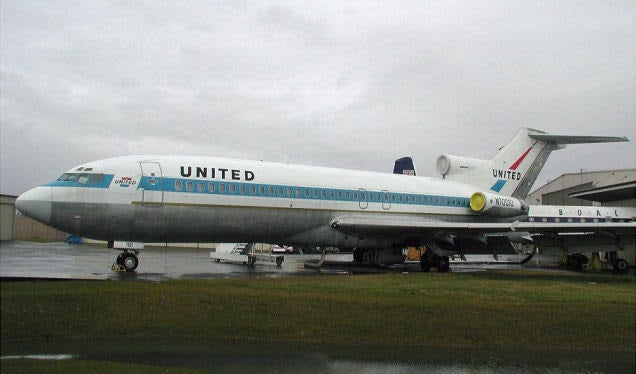
A United Air Lines Boeing 727 similar to the one that crashed
August 16, 1965 – The crash of United Airlines Flight 389, regularly scheduled !!!error: Indecipherable SUB-paragraph formatting!!! service from New York City to Chicago. The aircraft, a 727-22 (N7036U), had only been in service with United for two and a half months before the crash, and had completed only 138 landing and takeoff cycles. The aircraft was descending from 35,000 feet to 6,000 feet on approach to O’Hare Airport when, for unknown reasons, the pilots failed to level off and flew into Lake Michigan. Weather was not a factor, and the aircraft was functioning properly. The official !!!error: Indecipherable SUB-paragraph formatting!!! was unable to determine the exact reason for the crash, though some have surmised that the pilots may have misread their 3-point altimeter by 10,000 feet. The crash killed all 30 passengers and crew on board, and was the first loss of a 727.
!!! UNKNOWN CONTENT TYPE !!!
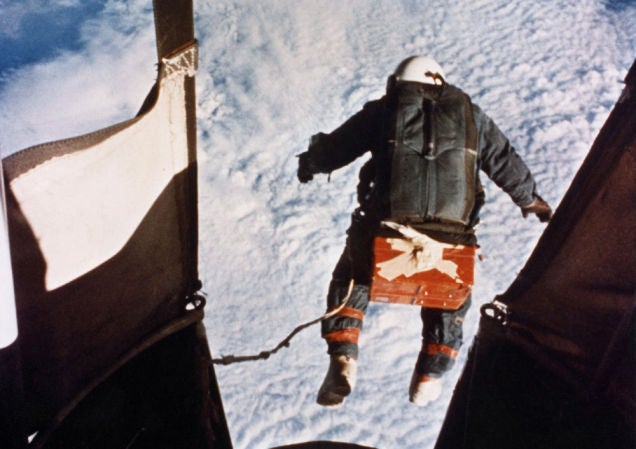
August 16, 1960 – US Air Force captain Joseph Kittinger sets a world record for the highest parachute jump and longest freefall. In order to test a parachute system for pilots operating from extreme altitudes, the US Air Force initiated !!!error: Indecipherable SUB-paragraph formatting!!! in 1958. During the program, Captain !!!error: Indecipherable SUB-paragraph formatting!!! made three jumps from a stratospheric balloon, each from a higher altitude. The third jump was taken from an altitude of 102,800 feet and broke a previous record set by Major !!!error: Indecipherable SUB-paragraph formatting!!! during !!!error: Indecipherable SUB-paragraph formatting!!! in 1957. Wearing a pressure suit, Kittinger fell 85,400 feet before deploying a small stabilizer parachute, setting another record for the longest freefall of 4 minutes 36 seconds. Kittinger’s record stood until 2012, when !!!error: Indecipherable SUB-paragraph formatting!!! leapt from 128,000 feet, a record that stood for just two years before it was broken by !!!error: Indecipherable SUB-paragraph formatting!!! , who jumped from 135,890 feet in 2014.
!!! UNKNOWN CONTENT TYPE !!!
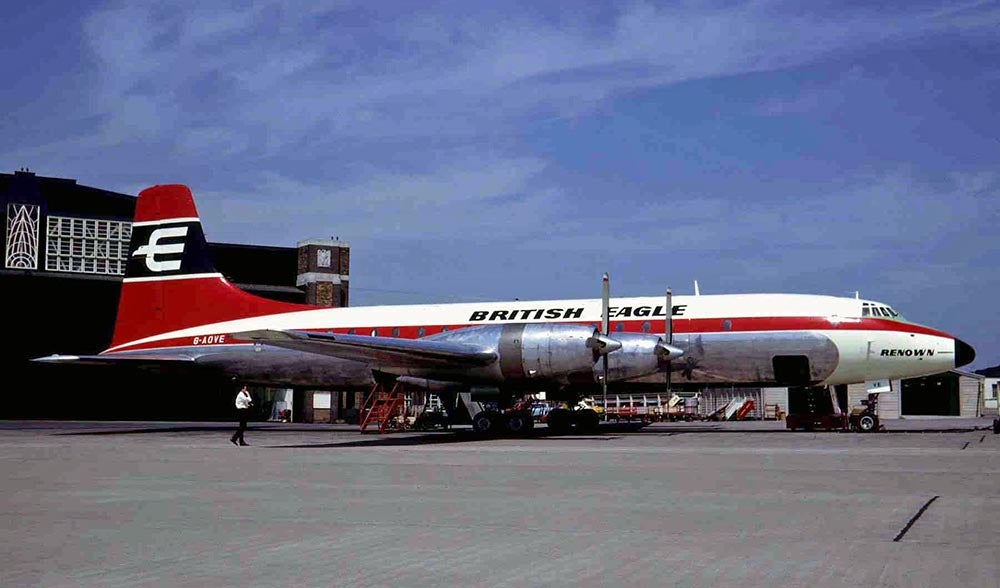
August 16, 1952 – The first flight of the Bristol Britannia, a medium- to long-range airliner built in response to requirements set forth by the !!!error: Indecipherable SUB-paragraph formatting!!! to develop civilian air transport in postwar England. The Britannia was originally designed to be powered by !!!error: Indecipherable SUB-paragraph formatting!!! radial engines, since early turboprops were still somewhat unreliable. During development, Bristol instead opted for !!!error: Indecipherable SUB-paragraph formatting!!! turboprops, which proved troublesome and delayed the Britannia’s entry into service. The engine issues were eventually solved, however, the Britannia arrived at the dawn of the jet airliner age, and only 85 copies of the turboprop airliner were built before production ended in 1960. Still, the Britannia, which came to be known as “The Whispering Giant,” proved popular for its quiet operation (at least on the outside of the cabin), and the design was subsequently sold to Canadair who developed it into the !!!error: Indecipherable SUB-paragraph formatting!!! and the CP-107 Argus maritime patrol aircraft.
!!! UNKNOWN CONTENT TYPE !!!
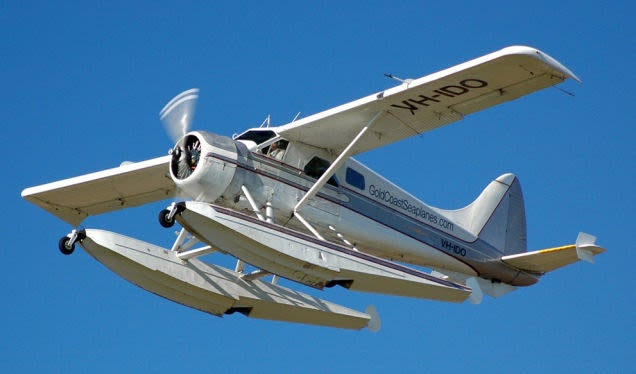
August 16, 1947 – The first flight of the de Havilland Canada DHC-2 Beaver, a high-wing monoplane developed specifically for !!!error: Indecipherable SUB-paragraph formatting!!! (STOL) performance and used around the world as a !!!error: Indecipherable SUB-paragraph formatting!!! . During the design phase, DHC sought input from famed bush pilot !!!error: Indecipherable SUB-paragraph formatting!!! and others, all of whom requested an aircraft with a huge amount of power and STOL capability. Full-sized doors were fitted on either side of the aircraft for ease of loading and unloading, and are large enough to fit an international standard drum (45 Imperial gallons, 55 US gallons). Pratt & Whitney Canada supplied surplus !!!error: Indecipherable SUB-paragraph formatting!!! engines that provided all the power the pilots requested and more. Initial sales were slow, but improved significantly when the US Army purchased hundreds of Beavers as the U-6A. A total of 1,657 were built, and many remain flying, though parts are becoming difficult to find for the WWII-era engines, leading some to upgrade the old airframe with more modern engines or even turboprop engines.
!!! UNKNOWN CONTENT TYPE !!!
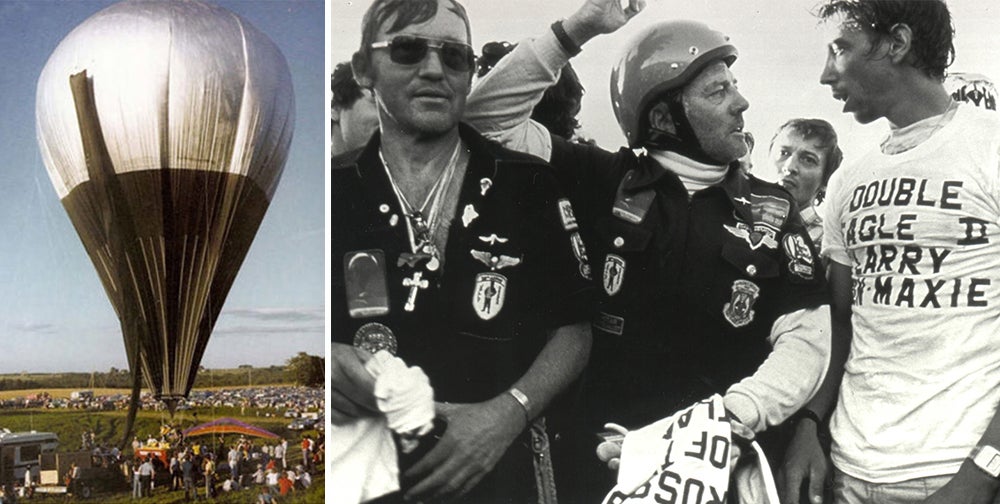
The Double Eagle II; Maxie Anderson, Ben Abruzzo, and Larry Newman
August 17, 1978 – The crew of the Double Eagle II makes the first transatlantic crossing by balloon. Balloonists had been trying to cross the Atlantic Ocean for more than 100 years, but it wasn’t until 1978 that balloonists Ben Abruzzo, Maxie Anderson, and Larry Newman reached France after lifting off from Presque Isle, Maine. Newman had planned on hang gliding down to European soil after the crossing, but the glider had to be jettisoned as ballast during flight. After crossing the Irish coast, French officials offered to let them land at Le Bourget Airport, where !!!error: Indecipherable SUB-paragraph formatting!!! landed in 1937, but the crew instead chose to land in a field in the suburbs of Paris. The gondola of the balloon is now on display at the Steven F. Udvar-Hazy Center near Washington, DC.
!!! UNKNOWN CONTENT TYPE !!!
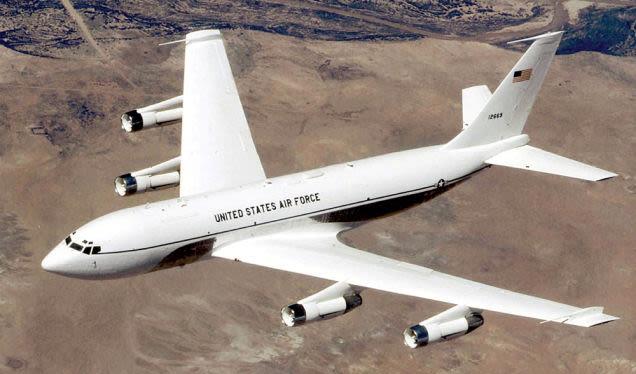
August 17, 1956 – The first flight of the Boeing C-135 Stratolifter,
a transport aircraft that was developed alongside the
!!!error: Indecipherable SUB-paragraph formatting!!!
. Boeing developed the
!!!error: Indecipherable SUB-paragraph formatting!!!
, better known as the “Dash 80,” in response to a US Air Force request for a jet-powered tanker. Though the vast majority of the 820 aircraft were built as KC-135 tankers, a number were built as transport aircraft, with the C-135A having accommodations for 126 passengers. The C-135B received more powerful engines, and five were designed for VIP transport as the VC-135B. Other variants were flown for weather reconnaissance, and a number were sold to France as tankers. The C-135 received the internal Boeing designation 717, though that number was later assigned to the
!!!error: Indecipherable SUB-paragraph formatting!!!
after the two companies merged.
!!! UNKNOWN CONTENT TYPE !!!
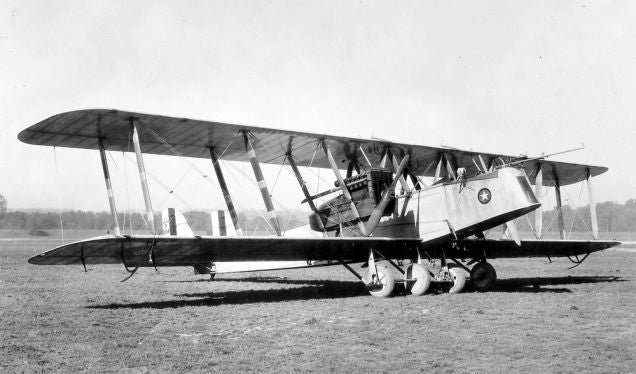
August 17, 1918 – The first flight of the Martin MB-1, a large biplane bomber built for the US Army Air Service and the first purpose-built bomber produced in the United States. Martin designed the MB-1 in response to the similarly-sized !!!error: Indecipherable SUB-paragraph formatting!!! , and it was powered by two !!!error: Indecipherable SUB-paragraph formatting!!! twelve-cylinder liquid-cooled engines that gave the bomber a top speed of 105 mph. The MB-1 could carry a total of 1,040 pounds of bombs and was armed with five .30 caliber defensive machine guns. It was configured for both reconnaissance and bombing missions, and was also developed as a torpedo bomber variant for the US Navy and US Marine Corps. The US Postal Service also flew the MB-1 as a mail plane. A total of 20 were built.
!!! UNKNOWN CONTENT TYPE !!!
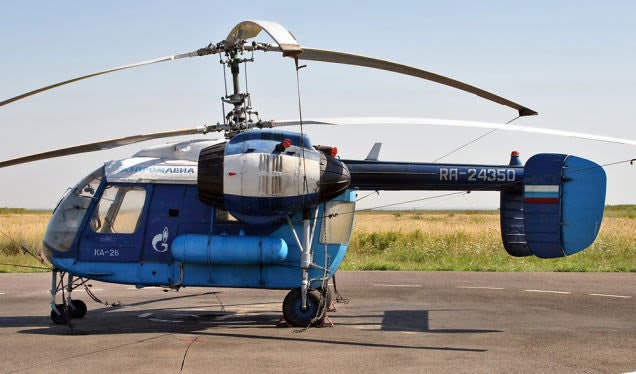
August 18, 1965 – The first flight of the Kamov Ka-26,
a light utility helicopter that was built in large numbers and has found its most popular use as an agricultural top dresser. The Ka-26 (NATO reporting name
Hoodlum
) is powered by two
!!!error: Indecipherable SUB-paragraph formatting!!!
nine-cylinder radial engines housed in external pods that drive a set of contra-rotating
!!!error: Indecipherable SUB-paragraph formatting!!!
, thus eliminating the need for a counter-torque rotor at the rear. A removable pod behind the cockpit can be configured for passengers, medieval, or light cargo, and a chemical hopper can also be fitted for agricultural use. A total of 816 were produced from 1969-1985, and it was later developed into the more powerful
!!!error: Indecipherable SUB-paragraph formatting!!!
and
!!!error: Indecipherable SUB-paragraph formatting!!!
.
!!! UNKNOWN CONTENT TYPE !!!

August 18, 1945 – The US suffers its last air combat casualty of WWII. Though the Japanese government had signaled its surrender three days earlier, some Japanese pilots continued to attack American bombers carrying out reconnaissance flights over the Japanese homeland. Two !!!error: Indecipherable SUB-paragraph formatting!!! , tasked with a photo reconnaissance mission over Tokyo, were attacked by 17 Japanese fighters, heavily damaging one of the Dominators. Three crew members were seriously wounded and 19-year-old Sergeant Anthony Marchione, a photographer’s assistant, was killed. Following the attack, the propellers were removed from all Japanese aircraft to prevent future attacks.
!!! UNKNOWN CONTENT TYPE !!!
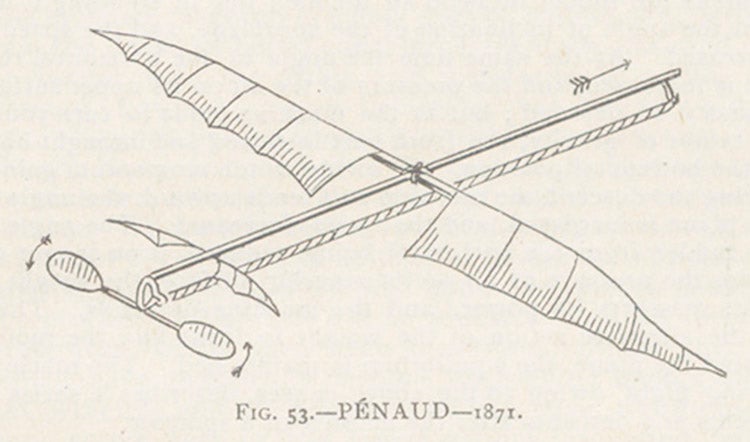
August 18, 1871 — Alphonse Pénaud achieves the first flight of a stable model airplane.
Though Pénaud is certainly not a household name in aviation history, his pioneering use of a rubber band to power flying model airplanes is still used today by hobbyists and toymakers. In 1871, more than 30 years before the Wright Brothers made their first powered flight, Pénaud built and flew a model airplane that he called the
Planophore
, with design elements such as a dihedral upturn of the wingtips and a tailplane with a smaller angle of incidence than the main wing that made the design inherently stable. It was powered by a pusher propeller turned by a rubber band that kept the
Planophore
aloft for 11 seconds in a demonstration flight that covered 131 feet. Despite the success of his model, Pénaud could find no financial backing for what was arguably groundbreaking work, and he committed suicide in 1880 at age 30.
!!! UNKNOWN CONTENT TYPE !!!
Connecting Flights
!!! UNKNOWN CONTENT TYPE !!!
!!! UNKNOWN CONTENT TYPE !!!
!!! UNKNOWN CONTENT TYPE !!!
!!! UNKNOWN CONTENT TYPE !!!
!!! UNKNOWN CONTENT TYPE !!!
If you enjoy these Aviation History posts, please let me know in the comments. You can find more posts about aviation history, aviators, and aviation oddities at !!!error: Indecipherable SUB-paragraph formatting!!! .
!!! UNKNOWN CONTENT TYPE !!!
 gmctavish needs more space
> ttyymmnn
gmctavish needs more space
> ttyymmnn
08/18/2020 at 12:55 |
|
I love how many Beavers I still see, even this far south. Most floatplanes here are Otters, but there are still Beavers working hard for a living, with their original radials. More of the Otters have turboprops but some of them are radials too.
 ttyymmnn
> gmctavish needs more space
ttyymmnn
> gmctavish needs more space
08/18/2020 at 12:57 |
|
Harrison Ford, for all the movies he makes, is very shy when it comes to live TV appearances. I still remember him blushing and having difficulty talking about his Beaver.
 gmctavish needs more space
> ttyymmnn
gmctavish needs more space
> ttyymmnn
08/18/2020 at 13:00 |
|
I have not seen that, I’ll have to check it out
 ttyymmnn
> gmctavish needs more space
ttyymmnn
> gmctavish needs more space
08/18/2020 at 13:02 |
|
It’s not easily findable on YouTube. I think it was an interview with Letterman.
 jminer
> ttyymmnn
jminer
> ttyymmnn
08/18/2020 at 13:09 |
|
As always an excellent read!
I do like that we removed the propellers from Japanese aircraft to prevent attacks. It’s a detail that shows how different the thought process was then vs now when it comes to rebuilding a conquered enemy. Anytime in the last 50 years the US military would have destroyed it all both inhibiting their ability to be used in a civilian capacity during reconstruction and demoralizing the now no-longer enemy and building resentment.
It’s like W barring all Ba’a thists and military officials from holding any government position after defeating Saddam . This was done even though membership was required to hold any government job so overnight anyone who knew what they were doing was no longer allowed to do it. I’m not saying don’t remove and punish those in charge, but the civil servant and engineering roles definitely needed a transition.
 ttyymmnn
> jminer
ttyymmnn
> jminer
08/18/2020 at 13:14 |
|
How much of our modern history would be different if we had left Saddam in power?
 jminer
> ttyymmnn
jminer
> ttyymmnn
08/18/2020 at 13:26 |
|
If we had done that plus left Iran alone it would be totally different world. Not saying Saddam wasn’t awful, but we made Iraq and the entire world a far more dangerous and violent place when we invaded. You reminded me of a Ferrell bit on SNL where as Bush he accurately recounts that ISIS was created by his disastrous middle east policies.
The Iranian Republican Guard fought the Taliban with us until W declared them public enemy with his Axis of Evil speech.
Also don’t forget that Clinton had negotiated a Nuclear deal with Kim Jong-Il that W tore up and look where they are now. I’m afraid the same thing will happen with Iran. To be honest though they’re far more intelligent and strategic than us in the region and know that actually using a Nuke would turn the entire world against them.
 ttyymmnn
> jminer
ttyymmnn
> jminer
08/18/2020 at 13:32 |
|
Still probably the funniest thing MadTV ever did.
 RacinBob
> ttyymmnn
RacinBob
> ttyymmnn
08/18/2020 at 13:36 |
|
All you want to know about Harrison’s Beaver.
 ttyymmnn
> RacinBob
ttyymmnn
> RacinBob
08/18/2020 at 13:38 |
|
“The safest and most reliable plane, perhaps in the hands of any pilot besides Harrison Ford.”
 jminer
> ttyymmnn
jminer
> ttyymmnn
08/18/2020 at 13:40 |
|
That was amazing - I hadn’t seen that before. That skit works on many levels and it is wonderful!
 phenotyp
> ttyymmnn
phenotyp
> ttyymmnn
08/18/2020 at 13:42 |
|
I’ve always liked the look of the Tucano. It just looks like it’d be rippin fun to fly.
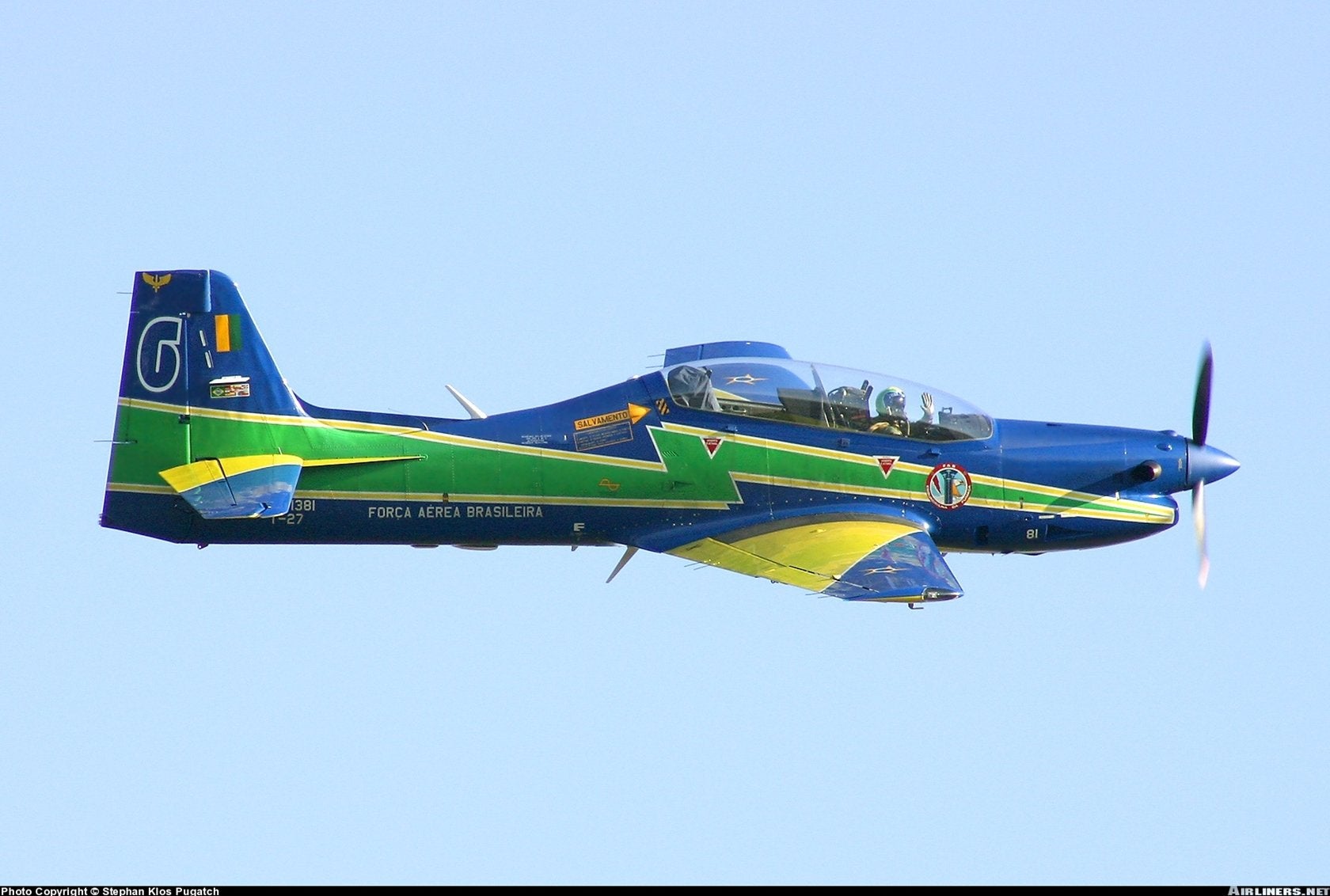
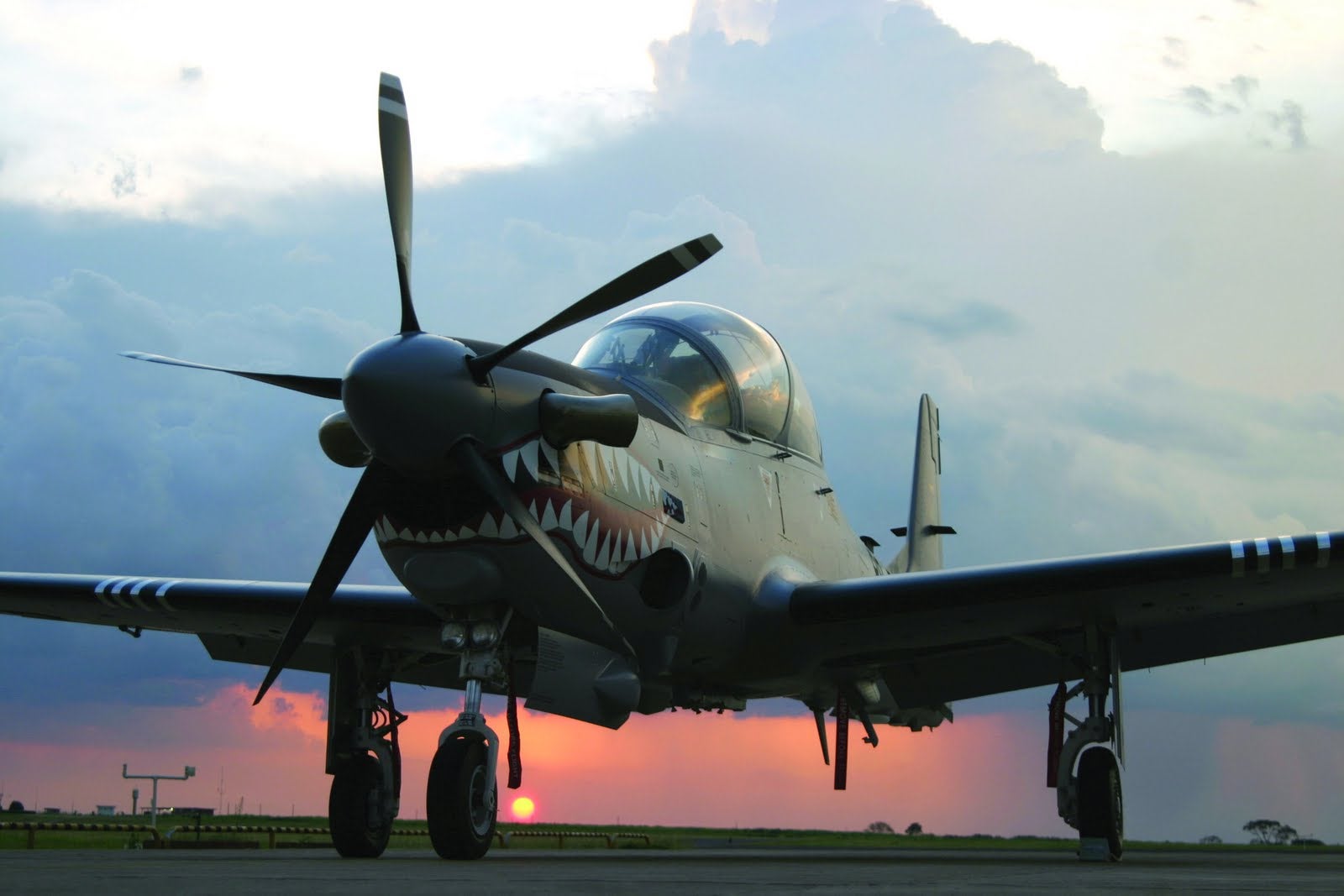
Ferocious.
 TheRealBicycleBuck
> ttyymmnn
TheRealBicycleBuck
> ttyymmnn
08/18/2020 at 13:47 |
|
In commemoration of Wiley’s accomplishments, there’s an airport named for him near Oklahoma City. http://wileypostairport.com/Home.aspx
When I was little, I lived just south of that airport and I could watch planes from my back yard. Our neighborhood was between the alignments of the two runways, so they rarely flew directly overhead, but I could watch them taking off from 17 and their final approach on 35.
 RacinBob
> ttyymmnn
RacinBob
> ttyymmnn
08/18/2020 at 13:49 |
|
Leme see, Am I flying the Beaver or the PT-22? Yep the wing is on top, it must be the Beaver. Now let me think, is that the one that lands at the airport or is it the one that lands on water......
 user314
> ttyymmnn
user314
> ttyymmnn
08/18/2020 at 13:52 |
|
The lack of RTF/ARTF models of the Planophore is a shame. That design seems it would be right in Guillow’s wheelhouse.
JSC Kamov is one of those manufacturers that’s absolutely wedded to an idea (co-axial rotors in this case), and I love them for it. The Mi-28 may be the better operating chopper, but the Ka-50/52 is the better looking of the two.
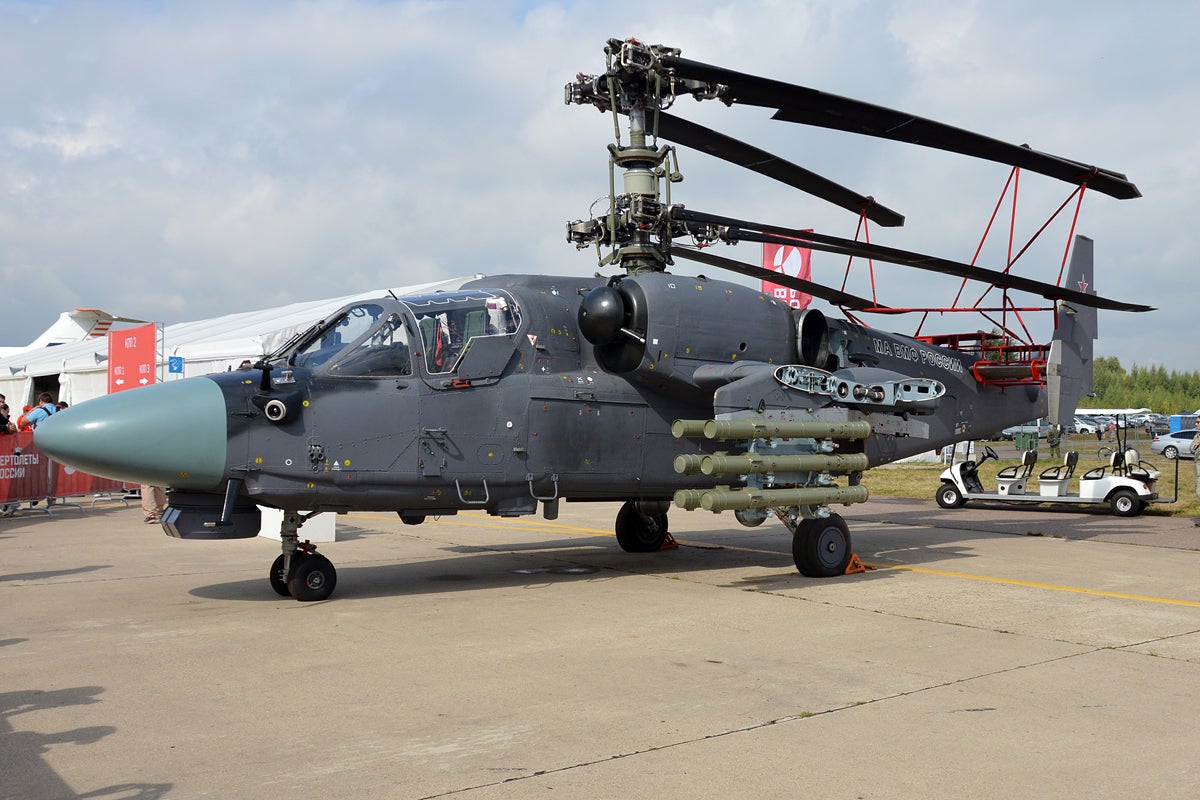
 ttyymmnn
> RacinBob
ttyymmnn
> RacinBob
08/18/2020 at 13:54 |
|
Or the golf course, or the taxiway....